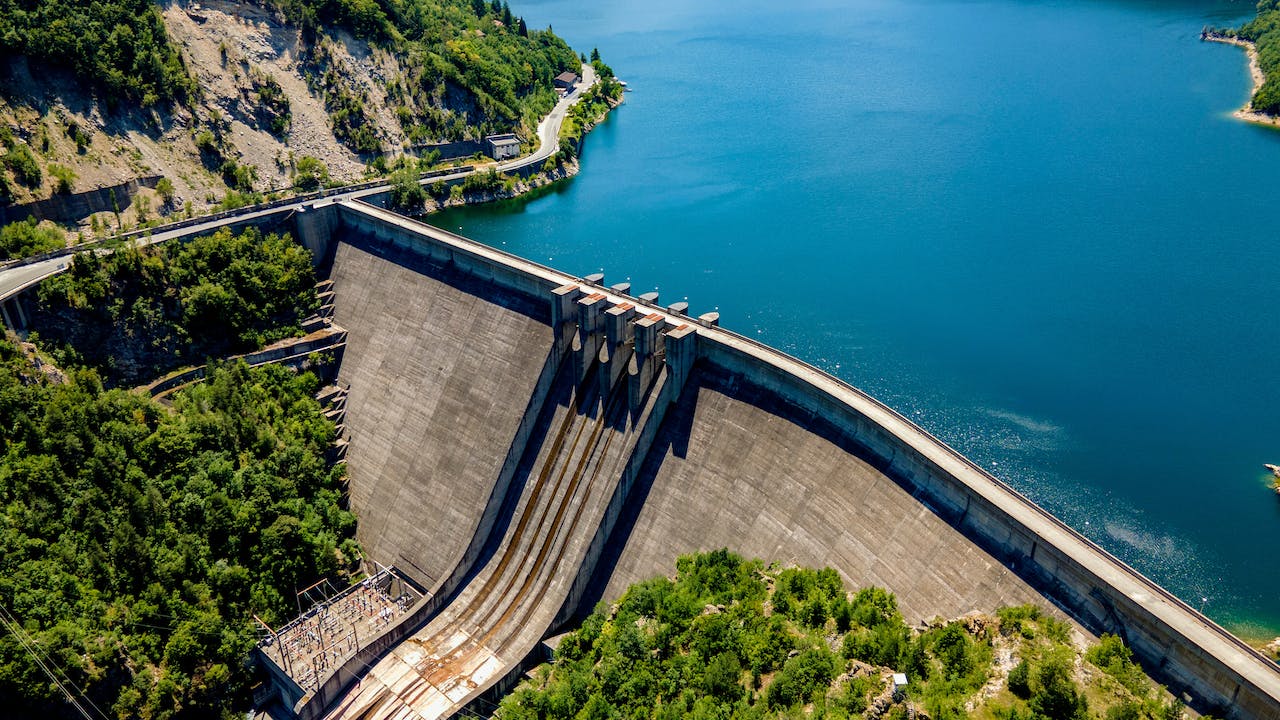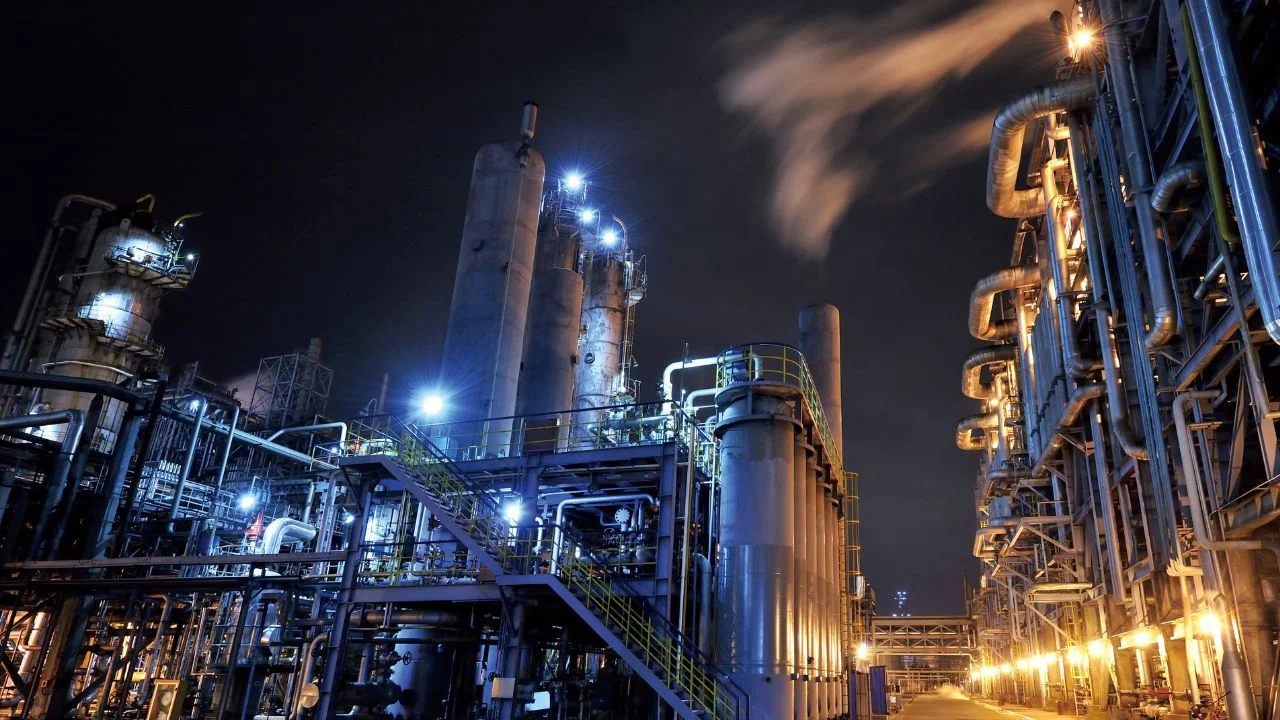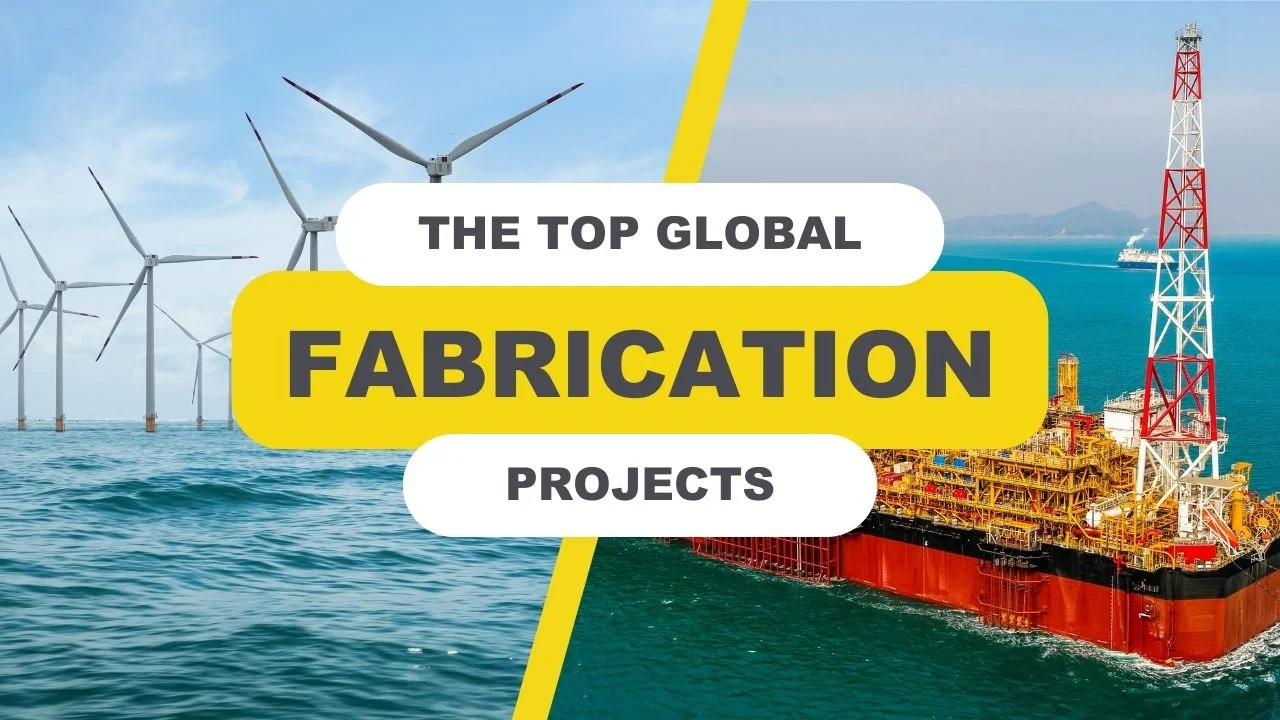The Rise of Renewable Jobs Under the Inflation Reduction Act
20 Nov, 20238 minRenewable jobs in the US are expected to reach the multi-million mark over the next decade a...

Renewable jobs in the US are expected to reach the multi-million mark over the next decade as tax credits introduced by President Biden's Inflation Reduction Act of 2022 begin to make their mark on the industry. The act's nearly $400 billion investment is already stated to develop 200+ renewable energy projects, resulting in a rise in jobs within the space.
But how many jobs in renewable energy will the Inflation Reduction Act create, which states will have the most opportunities, and what areas of renewables will these roles fall under? These are the questions we will cover in this guide, along with addressing the significant challenge these renewable jobs could bring with them that could impact your business.
In this guide, we’ll explore:
- How many renewable jobs are under the Inflation Reduction Act?
- What areas are these jobs in renewable energy stemming from?
- The challenge of renewable jobs under the Inflation Reduction Act
How many renewable jobs are under the Inflation Reduction Act?
The Inflation Reduction Act of 2022 has announced investments to fund more than 272 renewable energy projects across small towns and major cities in at least 44 US states. This equals around $278 billion in new investments for projects across renewable industries such as solar, wind, hydrogen, battery storage, and more. With these projects comes the promise of new renewable jobs.
Regarding the question of how many renewable jobs are under the Inflation Reduction Act, clean energy projects have already created 170,600+ renewable energy jobs. This number is expected to increase over the coming years, with the BlueGreen Alliance predicting an average of 1 million jobs in renewable energy will be created each year for the next ten years - with 9 million renewable energy jobs created in the next decade.
Their analysis forecasts that over the next ten years, 6 million renewable energy jobs will be created by tax credits, loans, and grants, whilst a new loan guarantee authority for the US Department of Energy will create 3 million renewable jobs.
With the Inflation Reduction Act spurring the creation of millions of renewable jobs in the US over the decade, which states are we expecting to see these roles appear in?
Which states have the most Inflation Reduction Act jobs?
Research into the Inflation Reduction Act by Climate Power has indicated 16 states that will develop renewable energy projects under the act. Here, they have forecast the number of renewable jobs in each state since the act was passed, which you can see below:
- Arizona - 12,720+
- California - 5,280+
- Colorado - 3,510+
- Georgia - 16,670+
- Michigan - 15,850+ (167,000 projected jobs over the next ten years)
- Minnesota - 910+
- Nevada - 11,500 (40,000 projected jobs over the next ten years)
- New York - 13,550+
- North Carolina - 4,140+
- Ohio - 5,360+
- Pennsylvania - 450+
- South Carolina - 13,540+
- Tennessee - 4,130
- Texas - 8,840+
- West Virginia - 4,790+
- Wisconsin - 500
Source: Climate Power
With an indication of how many renewable jobs are under the Inflation Reduction Act, you may be wondering what areas of the renewable energy industry these roles stem from.
The Inflation Reduction Act: What industries do jobs in renewable energy stem from?
Renewable energy jobs under the Inflation Reduction Act span a plethora of industries within the renewables space. Again, Climate Power has highlighted some of the key industries within the US renewables market and the number of jobs in renewable energy they expect the act to bring.
We’ve listed these industries and the number of jobs below:
Solar
- Large-scale solar energy projects are being developed in states including Alabama, Florida, Illinois, Mississippi, Missouri, and Vermont, with over $20 billion invested from the Inflation Reduction Act. To date, 56 solar projects have been announced, creating 21,500+ solar jobs.
Wind
- Onshore and offshore wind energy projects will be developed due to the Inflation Reduction Act, with 29 wind projects already announced. Over $20 billion has been invested, with New Jersey, New Mexico, Kansas, and Iowa expected to expand projects in their respective states. Since the act was passed, 8,000+ wind jobs have been created.
Clean Hydrogen
- Investments in 12 clean hydrogen projects have been announced under the Inflation Reduction Act, totalling over $11 billion. States such as New York, Texas, Connecticut, Massachusetts and Minnesota are enhancing their production of clean hydrogen. Additionally, c.7,140 renewables jobs have been created as a result of the act’s investment.
Battery projects
- Since the Inflation Reduction Act of 2022 was passed, 91 new battery projects have been announced, equating to over $77 billion of investment. States including New York, Kentucky, Louisiana and Missouri, are expected to benefit from the investment. It’s also forecast that around 92,900 battery jobs have been created.
Electric vehicles (EVs)
- EVs are booming in the US auto industry and are contributing to the nation's renewables efforts by reducing its reliance on traditional fossil fuel energy sources. With the Inflation Reduction Act giving Americans the incentive of up to $7,500 of tax credits for driving qualified clean vehicles, investment in the industry under the act has reached over $44 billion, with 65 EV projects in the pipeline, creating 32,400+ renewable jobs.
Grid and transmission
- Improvements in electrical grid and transmission projects have announced more than $4 billion in investments, with 13 projects. Businesses in Rhode Island and Wyoming are advancing new transmission projects, while Alabama, Indiana and Virginia are progressing in the transformers and utility poles space. The grid and transmission industry has created over 2,400 jobs since the introduction of the Inflation Reduction Act.
Other clean technologies
Tax credits from the Inflation Reduction Act have already contributed to an announced 25 clean technology projects, including semiconductor manufacturing. These investments of more than $133 billion have created over 18,500 renewable jobs.
Continuing to focus on where the jobs in renewable energy stem from, it’s worth highlighting the research by the BlueGreen Alliance and the jobs they believe will be created in light of the Inflation Reduction Act. From clean energy to manufacturing and transportation, here is an outline of their findings:
Clean energy
The Inflation Reduction Act of 2022 is forecast to create 5 million clean energy jobs over the next ten years. Of these renewable jobs, tax credits will create over 1.7 million jobs in renewable energy sectors such as wind and solar.
- Around 40,000 job opportunities will also be created from grants and loans within the grid modernisation space, ensuring infrastructure relating to electricity transmission maintains its efficiency, resiliency, reliability and accessibility across the US. Additionally, over 90,000 Inflation Reduction Act jobs will be created from loans for rural electric cooperatives to support economic developments and clean energy advancements.
Energy-efficient buildings
Further investments from the Inflation Reduction Act are set to make homes and offices more energy-efficient, climate-resilient and healthier. This investment is said to create 900,000 renewable jobs over the next decade.
These roles will be split into three areas:
- First, 720,000 jobs will stem from energy-efficient tax credits to support the construction of commercial and residential buildings.
- Over 170,000 jobs will come from home energy rebates, installing affordable energy efficiency upgrades to households to reduce energy costs and mitigate pollution.
- A final 10,000 jobs will go towards building affordable housing that is energy and water-efficient while also being climate resilient.
Clean manufacturing
The Inflation Reduction Act of 2022 will also create 900,000 renewable jobs in the clean manufacturing space over the next decade. Again, these opportunities are split into different segments within clean manufacturing.
- Over 670,000 clean manufacturing jobs will go towards onshore and offshore wind turbine manufacturing roles, EV battery jobs, and solar panel installation roles, among other clean tech opportunities.
- Close to 120,000 jobs in renewable energy will fall under industrial transformation - reducing the emissions generated in the production of aluminium, steel, cement and other manufacturing facilities that use energy-intensive processes.
- An additional 80,000 jobs from loans and grants will support manufacturing clean energy vehicles such as EVs.
- Finally, around 60,000 roles will fall under 'buy clean', supporting the government's efforts to purchase low-emission construction materials for various infrastructure projects.
Natural infrastructure
Over the next decade, more than 600,000 Inflation Reduction Act jobs will be created to support the US's natural infrastructure, including forests, natural ecosystems, and wetlands.
- Of these roles, close to 380,000 jobs will be dedicated to regenerating farmland. Here, talent will support farmers in producing healthier soils, protecting against droughts, reducing pollution and ultimately enhancing the productivity of the soils.
- Over 100,000 jobs will help protect and restore forests across the US, supporting the efforts of establishing healthier and climate-resilient ecosystems.
- An additional 50,000 job opportunities will be found in coastal communities to protect coastal habitats and fisheries from climate-related storms.
- A further 20,000 jobs will go towards protecting and restoring natural parks.
Clean transportation
The Inflation Reduction Act is also dedicated to making EVs more affordable for millions of families across the United States while lowering traditional vehicles' climate impact on the planet. Additionally, the act aims to reduce the number of postal delivery and highway vehicles that run on fossil fuels from contributing to air pollution. As a result of these clean transportation efforts, over 400,000 jobs will be created.
- Over 260,000 of the 400,000 jobs will be dedicated to making EVs cheaper and charging points more accessible.
- Close to 60,000 jobs will go towards 'neighborhood access', supporting transit equity to reunite communities split by polluting highways.
- Finally, 50,000 jobs will support the electrification of trucks, buses and tens of thousands of US postal service trucks to help take vehicles powered by traditional fuels off the highways.
Environmental justice
Lastly, 150,000 renewable jobs will be dedicated to environmental justice over the next ten years, supporting communities' fight for climate resilience and clean air.
- Of these roles, 30,000 will go towards community-driven projects to address environmental and health impacts from pollution. A further 5,000 jobs will go towards reducing air pollution in schools and the harmful effects of traditionally fueled vehicles.
Clearly, the Inflation Reduction Act of 2022 promises the introduction of hundreds of thousands to millions of renewable jobs. At a glance, these proposals appear positive. However, one significant caveat accompanies the rise in opportunities and will be discussed in our next section.
The challenge of renewable jobs under the Inflation Reduction Act
The Inflation Reduction Act is poised to create 9 million renewable jobs in the US over the next ten years. Although this is immensely promising, a talent shortage accompanied by a supply and demand issue within the renewable energy space is a real problem that your business must recognize if you want to acquire top talent to support your future projects.
It's important to note that the current talent shortage within the industry will not just see you competing with the US, but the entire world. The International Renewable Energy Agency (IRENA) has stated that jobs in renewable energy have reached 12.7 million worldwide - a number that could grow to 38 million by 2030, rising to 43 million by 2050.
Additionally, McKinsey has forecast that by 2030, 1.7 million workers will be needed to support the maintenance and operation of renewable energy projects, with 1.1 million workers, from electricians and engineers, required to construct wind and solar projects and a further 1.3 million people will be needed to fill leadership and management positions.
As more corporations enter the US renewables market to become eligible for the Inflation Reduction Act's tax credits, the competition for talent between your business and other organizations will be fierce. Ultimately, the supply and demand issue regarding talent shortages must be addressed. Thankfully, we've crafted a thought leadership piece dedicated to helping you overcome the challenges regarding the lack of talent in the new era of the Inflation Reduction Act.
Download your copy of our guide on Navigating the Inflation Reduction Act Talent Storm today and explore valuable insights on how to thrive among the recruitment challenges created by the Inflation Reduction Act, while discovering how to attract top talent in the renewable energy industry.
Final thoughts on the rise of renewable energy jobs
The Inflation Reduction Act of 2022 is a pivotal driver for the surge in renewable jobs across the US over the next decade and further into the future. With Biden's ambitious investment of close to $400 billion and more than 272 renewable energy projects spanning diverse renewable industries, the act has already sparked the creation of 170,600 renewable jobs and counting.
We've addressed the industries fueling this renewable job boom under the act, encompassing a broad spectrum, from solar and wind projects to clean hydrogen, battery initiatives, electric vehicles, and grid enhancements. The BlueGreen Alliance's insights further emphasize the act's wide-reaching impact, foreseeing the generation of clean energy jobs, roles in energy-efficient buildings, clean manufacturing, natural infrastructure, clean transportation, and environmental justice.
Despite the promise and potential of this job surge, a looming challenge lies in the talent shortage within the renewable energy sector. As the Inflation Reduction Act aims to create millions of jobs over the next decade, addressing this global talent deficit becomes imperative, which is something we cover in our guide on Navigating the Inflation Reduction Act Talent Storm.
We're keeping a close eye on the future of the Inflation Reduction Act and look forward to seeing how it impacts the renewable energy space in the future. Regardless of what happens, we'll be ready to adapt our methodologies to help companies find success with their recruitment strategies.
Discover more from us on the topic of the act by reading our guide: How the Inflation Reduction Act is Impacting Renewable Energy. Alternatively, scroll below to see how we can address your hiring challenges today.
Looking to build your renewable energy talent roster?
We have over 90 years of cumulative experience in matching the world's most innovative companies with the best talent on the market. Our specialist consultants deliver unmatched talent acquisition services, from contract to permanent (direct) hiring solutions, to find the people to fill your renewable jobs and progress your future energy projects.
If you're seeking a recruitment partner to help support your renewable energy projects in the era of the Inflation Reduction Act, contact NES Fircroft today.









